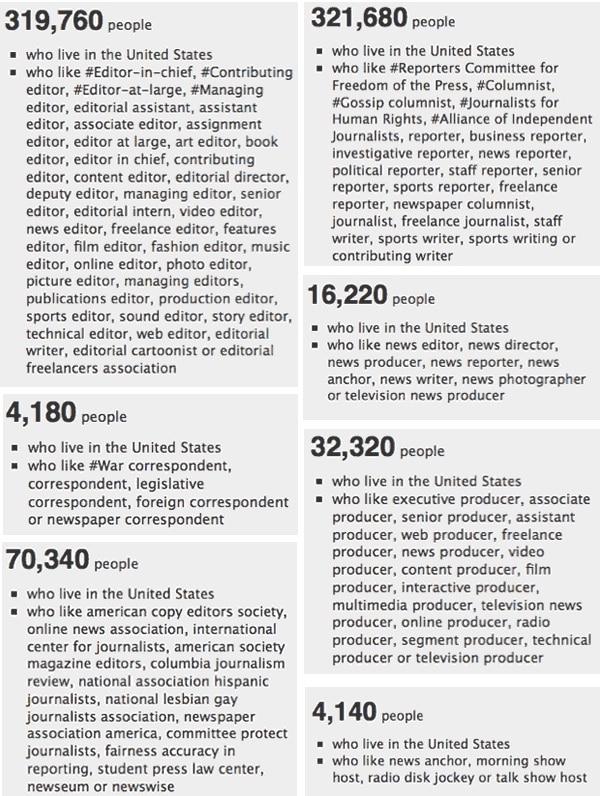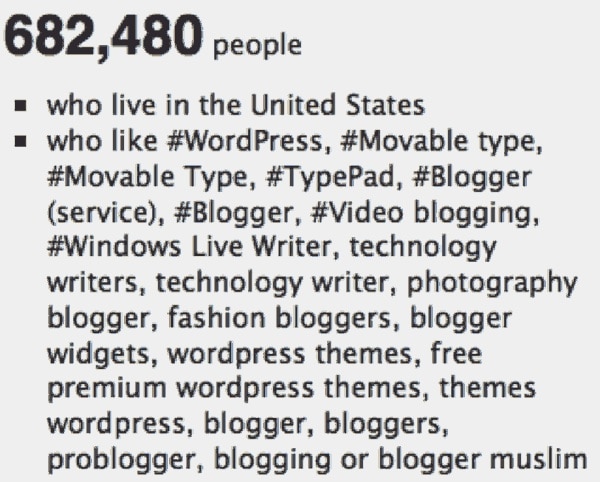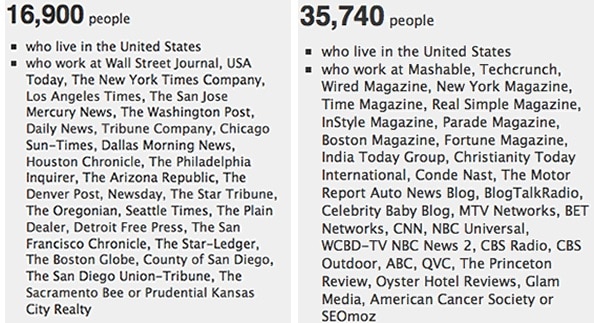Over the last few years, social ads and retargeting have taken the online marketing world by storm. These technologies can be leveraged in fantastic ways to service KPIs traditionally associated with public relations. This is not to minimize the importance of awesome content and organic outreach. However, paid amplification of terrific content is an important cog in the promotional machinery and is the stuff of specialized online marketers.
Content and public relations have always been essential for SEO. That’s because great PR focused on offering enthralling content yields essential links, chatter, interviews, mainstream media mentions, citations, and other real world buzz crucial to pumping search engine results both on site and off. If psychographic targeting, social PPC, and retargeting took you by surprise (or you don’t know what that means), then 2013 might be a bit rough. If your content marketing already pulls interest and engages media by strictly organic promotion, it’ll rock even more when amplified with paid. Serving happening content to media players and following clicks earned are the new PR reality.
The effect of today’s paid advertising technologies on classic public relations is little discussed. But the impact on how PR practitioners can gain mind share and crank penetration by promoting content to media roles will be (and already is) tectonic. If you’re an agency or in-house PR pro who has prepared and trained for this era’s inevitable shift, good work! The cheese is yours to claim. Others will be left eating dust as the public relations industry corrects itself, shedding the glut of old school PR personnel who did not adapt. This “talent correction” will also apply to client facing account managers charged with sales goals. It’s hard to sell paid PR/social mashup/content amplification products if you don’t understand how the world has fundamentally changed. Twenty-thirteen will see some companies fade away, while others reap the benefits of an evolving online environment.
“This means the essential job of sales teams will be to consult with clients and design marketing strategies that mix a number of a media companies’ assets to solve a specific business problem”. —Adam Chandler, CRO in Residence at Lerer Ventures—
“Technology and new business models have gotten us to a place where the customer doesn’t even know what’s possible” —Doug Weaver, Upstream Group—
The Inbound PR Revolution
Inbound PR will be one of the hot topics of conversations in 2013. Public relations pros worth their salt have been using these techniques for years. Inbound PR means that writers and influences are targeted with compelling content designed for the media, become interested in the promoted content, and follow the story on their own volition. Inbound PR generates mind share, traffic, links, and buzz promoting content with social PPC to promote PR goods. Most marketers don’t understand the easy availability of paid inventory to influence the media. Fewer think to retarget media traffic.
Psychographic Segmentation & Media Roles
Because social media sites are selling ad units that look organic, it’s easy to promote content with social ads without being pushy. Such content promotion can be incredibly powerful when tightly tuned and targeted towards journalists, bloggers, morning show hosts, news anchors, editors, and many other media roles.
Clever PR content promotion targets these media players, who are uniquely interested in highlighting content they find newsworthy. Best of all, nobody actually pitched anything. The writers decide to take in the content on their own. Little do they know that only media roles are targeted.
Facebook and LinkedIn ads work really well for promoting content to media roles. We’ll focus on Facebook here because the current available ad units are more organic feeling than those offered by LinkedIn. The trade off is that LinkedIn targets many more roles in granularity. We’ll discuss LI media roles in an upcoming blog post.
Suffice to say that AIMCLEAR has had great success, both internally and with clients, when promoting content with FB page post ads, page post like stories, and other paid-organic ad units. You can keep it out of users’ news feeds by using traditional FB Ads, which cost a little more but are a more flexible unit which looks a little less organic. Not to worry. They work great too.
Here’s a select list of targetable editors, reporters, columnists, journalists, writers, correspondents, anchors, hosts, news, producers, bloggers, journalism organizations, and related assets. This targeting is worth its weight in gold to PR firms, link builders, and SEOs alike.

Bloggers are great sources of links. They can be targeted by the category in which they specialize and the tools they use. Here’s a select list to get you started:

Facebook and LinkedIn also serve up a cornucopia of media outlets you can hone in on by targeting places of employment. They span both broad and niche publications, and there are dozens out there available via electronic and print circulation. As an example, The Washington Post is broad and covers many topics. Conde Naste and small geo-specific television stations are focused by their very nature. There are hundreds of major media outlets all over the world to target and thousands of authority niche’ players. Check out the tasty excerpts of our personaDriver DB below for an idea of the breadth this technique. Do you WANT these media players to see your content?

Media outreach content strategies can be built a couple of different ways:
- Niche media roles to broad publications (I.E. fashion editor/Boston Globe)
- Broad media roles to focused publications (I.E. all blogger roles/Conde Naste)
Retargeting & Public Relations
Retargeting is relatively simple. A user visits your website. Later, when visiting another website, that same visitor is served your banner ad. Don’t underestimate the value of retargeting at the occupational influencer level. These impressions can be incredibly valuable for amplifying the initial content click. Over time good things often happen.
Once you earn a click from a media player, don’t let him or her go right away. Set a retargeting cookie and follow that NY Times assignment editor or NBC morning show host around in unobtrusive ways. Use creative that is properly segmented so as to nurture that media player’s initial interest in your content. These are highly focused impressions that pay. Retargeting press release traffic is another excellent tactic. Dominate mind share, one piece of content at a time.
PR & Big Data
Big data gives marketers fantastic tools to target and follow media roles with social ads to promote content. The ads feel organic because that’s how social sites earn their money, slipping users the organic-feeling fish. The new reality is that PR, social, and paid paychographic content promotions are now fantastically integrated into one powerful PR tactic.
All the same great reasons apply for why content is crucial for PR. Make sure the content is truly great and matters to the journalists you’re targeting. Don’t forget to tailor retargeting banner ads for the sports reporter or Latino blogger you drove to the content in the first place. Remember that paid promotion won’t move bad content and organic promotion, including personal outreach, is still a huge part of the puzzle.
That said, big data offers lots of options for public relations to earn mind share that did not exist before. Adapt to remain relevant in the new age of PR. Happy hunting, marketers!
Header image © Africa Studio – Fotolia









